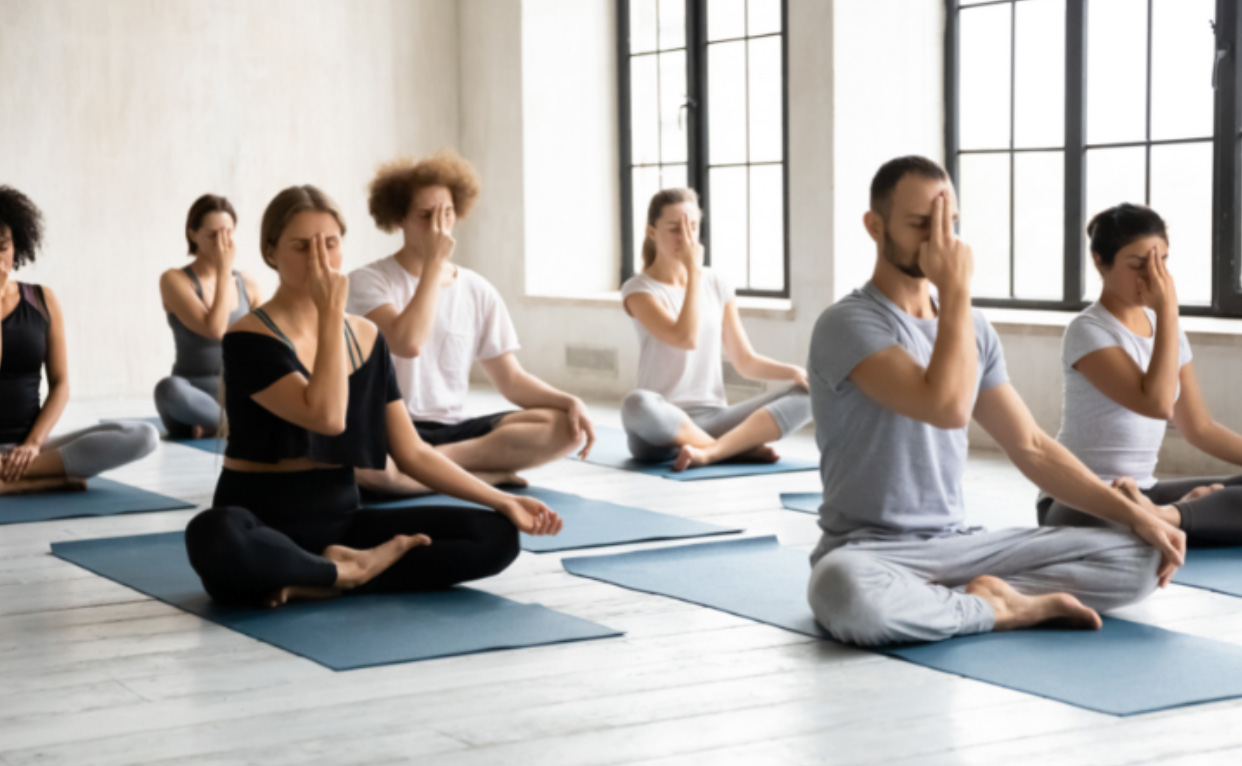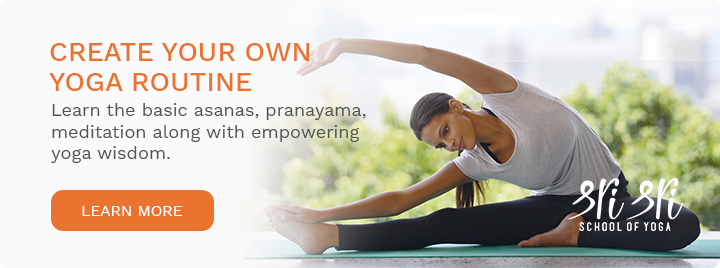Nadi Shodhana Pranayama, or “alternate nostril breathing,” is a simple yet powerful technique that calms your mind, relaxes your body, and balances your emotions. It is a great technique to practice to conclude your yoga (poses) routine or just before your daily meditation. It also helps ease racing thoughts if you are experiencing anxiety, stress right before a business meeting or having trouble falling asleep.
If you want to feel more balanced and calmer, this is the breathing technique you’ve been looking for! Let’s inhale and dive in!
Alternate nostril breathing: two common variations
Alternate nostril breathing in Sanskrit is called Nadi Shodhan Pranayama, which translates to “subtle energy clearing breathing technique”. The name is often synonymously used for Anulom Vilom Pranayama. In Nadi Shodhana, you may optionally hold the breath briefly (for a couple of seconds) after each inhalation and exhalation.
10 Benefits of alternate nostril breathing

There are many more pranayama techniques you can learn. But this soothing alternate nostril breathing is on the top of the list for the positive effect that it offers, especially for its psychological benefits.
According to Business Insider, Hillary Clinton attested to using the alternate nostril breathing technique as a saving grace during the stressful 2016 presidential election.
Yes, the world is now catching onto the benefits of yogic breathing exercises! Whether running for president or running late for work, alternate nostril breathing is an excellent way to tap into the body’s natural stress-reduction mechanisms.
This slow yogic breathing technique is a great way to end your yoga asana practices. After yoga, do nine rounds of alternate nostril breathing followed by a soothing meditation.
Alternate nostril breathing helps calm the mind, reduce anxiety, and brings a feeling of relaxation to the entire body. It also relaxes the mind in preparation for meditation, which can be helpful for those struggling to settle down before meditating.
When performed for just a few minutes, alternate nostril breathing can instantly reduce stress and fatigue. It is also a quick and efficient practice to do before high-stress situations such as job interviews and public speaking engagements.
Alternate nostril breathing:
- Calms and centers the mind. Activates the ‘rest and restore’ functions of the parasympathetic nervous system.
- Brings the mind to the present moment and out of the past (releasing old fears, regrets, and worries)
- Helps improve function of the circulatory and respiratory systems
- It improves breathing and can help you breathe better. Research found that over one month of practice, people had better oxygen flow and could exhale more oxygen. People who can exhale high amounts have healthier lungs.
- Relieves stress and relaxes the body and mind. One study found that after practicing alternate nostril breathing for 12 weeks, male participants reported lower levels of stress. Another study found that this technique helped lower stress in pregnant survivors of intimate partner violence.
- Harmonizes the left and right hemispheres of the brain, which correlate to the logical and emotional sides of our personality
- Purifies and balances the nadis (subtle energy channels) ensuring a smooth flow of prana (life force) through the body
- Soothes the nervous system
- Helps to maintain body temperature
- Helps to lower blood pressure (though not a substitute for medication). One study found that alternate nostril breathing decreases blood pressure while increasing alertness. (For that reason, this breathing technique isn’t your best choice before bed. To lull yourself to sleep, try Ujjayi or Victory breathing instead.)
How to practice the alternate nostril breathing

It’s an easy technique to hit the reset button and calm the mind. Next time you find yourself doing too many things at once, or you sense panic or anxiety begin to rise, just practice a few rounds of alternate nostril breathing as per following steps:
- Sit in a comfortable position with your spine long and your hips relaxed. Relax your face. Close your eyes.
- Left hand in chin mudra: Place your left hand on your left knee with the palm facing upward in a hand position called Chin Mudra, by gently touching the tips of your index finger and thumb together, with the remaining fingers gently outstretched.
- Right hand in nasagra mudra: Rest the tip of the index finger and middle finger of the right hand lightly on your forehead in between the eyebrows. Your ring finger and little finger will close the left nostril, and alternately the thumb will close the right nostril.
- Take a deep breath in, as you exhale, close the right nostril with your thumb and breathe out through your left nostril and get ready for the first round of this breathing exercise.
- Inhale slowly through the left nostril, then close the left nostril with your ring finger.
- Open the right nostril and gradually and evenly breathe out completely.
- Breathe in smoothly through the right nostril.
- Now close the night nostril with the thumb, breathe out through the left nostril.
- The steps 5 and 8 constitute one round of alternate nostril breathing once you prepare for the practice with steps (1 to 4). Continue similarly to perform nine rounds over a period of 5 minutes. Or practice for 5 minutes.
- Remember to always inhale through the same nostril you just exhaled through
- Keep your breath even, slow, and gentle all throughout
- Finish your final round with an exhalation on the left side
Beginner tip:
If you are a beginner, breathe in for four counts and exhale for four counts. As you improve in your practice, your exhalation could be a little longer (six to eight counts) than your inhalation (four counts).
Tip for experienced practitioners:
As you advance in your practice, you can gradually increase the length of your breaths. You can also add breath retention after each inhalation and exhalation.
For even more clarity, you can follow this easy video so that you are confident in practicing alternate nostril breathing on your own. For further support, you can seek guidance from a yoga or meditation instructor familiar with how to practice alternate nostril breathing.
6 things to remember when you practice alternate nostril breathing
- The breathing pattern is: breathe in, breathe out, switch sides, and repeat.
- End each round with an exhalation on the left side.
- Do not force the breath, keep it gentle and natural. Allow the breath to be smooth and even without creating force or pressure.
- Do not breathe through the mouth or make any sound when practicing.
- Place the fingers very lightly on the forehead and nose. There is no need to apply much pressure.
- Regular practice will give you the most benefits.
Create your own yoga routine
Learn the basic asanas, pranayama, meditation along with empowering yoga wisdom at our Sri Sri Yoga Foundation Program.


